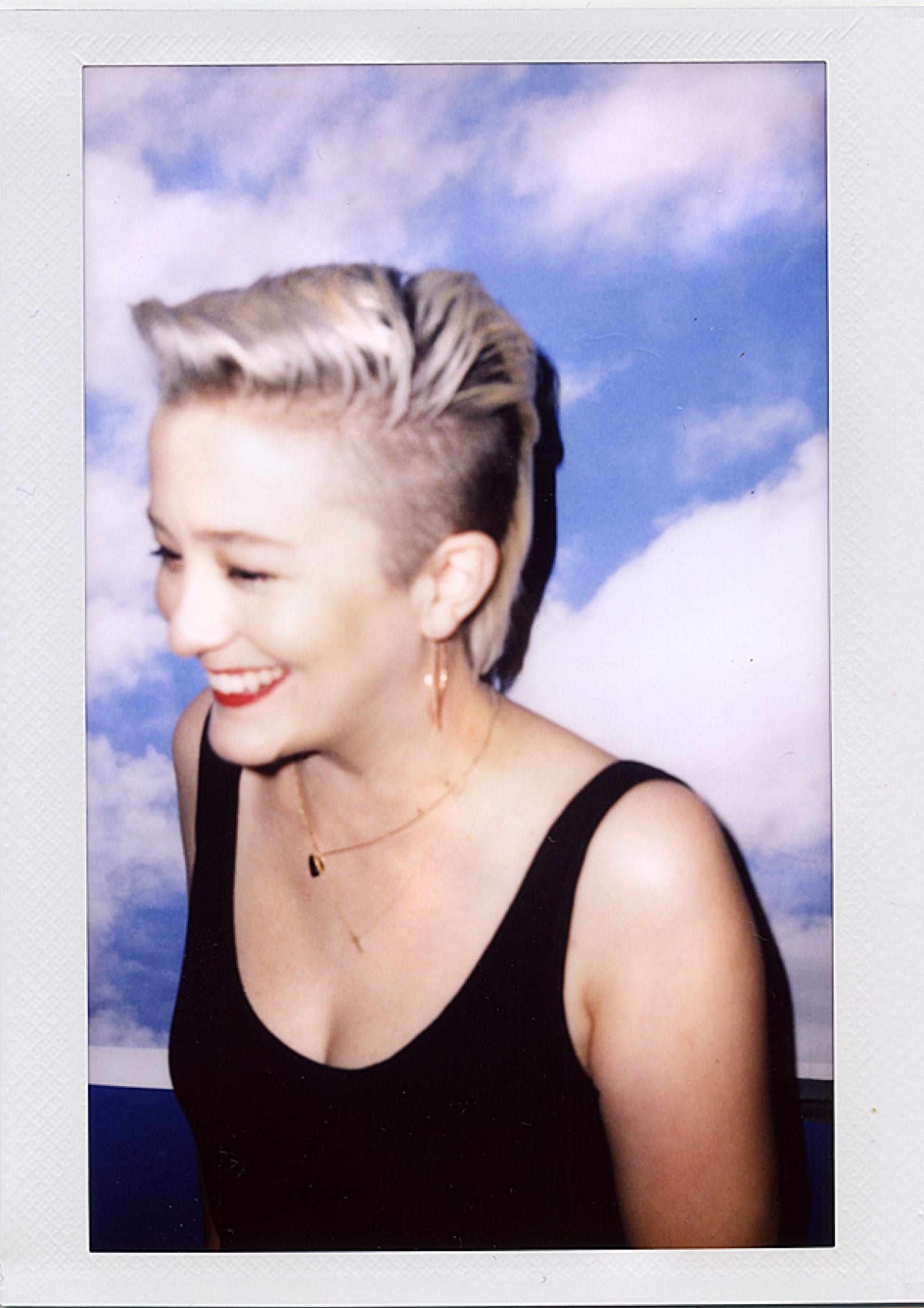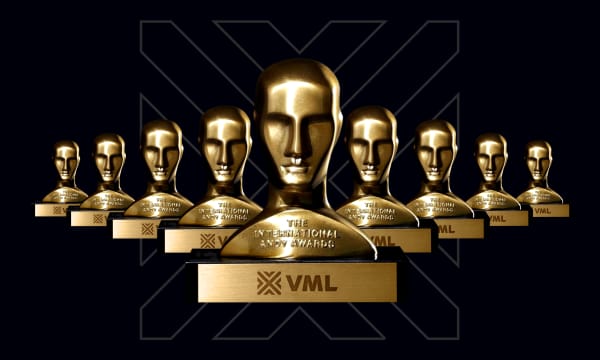Fashion photographers Kristiina Wilson and Logan Jackson are making space for alternatives to the gender binary with a new fashion, accessories and lifestyle platform. As two people whose own fashion choices often blur the gender binary, Wilson and Jackson grew frustrated with photo shoots designed exclusively for men’s or women’s sites. In 2015, the duo launched agender site You Do You, a “collaborative platform for people of all sizes, ages, colors, abilities and genders.”
Editor-in-chief Kristiina Wilson sat down with the Innovation Group to speak about generation Z and the future of fashion.
Why start You Do You?
I worked in fashion as a photographer for over 10 years, and became really frustrated with how binary that industry is. I wear a lot of menswear. My assistant is a man, but he wears a lot of womenswear. I just felt that there wasn’t a site that catered to people like us. There’s Refinery29 for women, and there’s Mr. Porter for guys, but there’s nothing that’s just clothes for people.
Fashion tries to be so far ahead, but in many ways it’s not very modern. It still puts people in binary boxes, and doesn’t include people who are differently sized, abled or aged. It’s created for a 20-year-old white woman, in particular, or for her counterpart, a man who can be slightly older. That’s essentially it.
I got sick of it and thought, why don’t we just make something that talks about clothes and fashion and lifestyle for everybody? We’re all people, and we all have to get dressed.
I did a lot of research and didn’t find anything like that, and I couldn’t believe it. So I thought, here’s a gap and we should really fill it and serve the LGBT community, as well as everybody else that doesn’t see themselves represented in fashion.
What has the reaction been like from your users and people you’ve worked with?
It was really fast, and really positive. We’re a nonprofit, but I still was very strategic about our business plan and goals. I planned to publish only a few stories every week and to be slow, but to focus on quality—not like these monster sites that push out content.
But when we launched, on the first day we were asked to speak at MoMA, and at a gender panel hosted by Refinery 29, and we got picked up by Paper magazine and the New York Post. Just for the launch! I was shocked, because I didn’t think anybody would necessarily find out right away. I planned to use social media to spread the word, because people like to discover things organically, and not say “Here’s a press release!” I don’t like getting those. That tactic worked, but so much faster than I had anticipated.
We get nice emails, from kids especially, who live in areas that are not as urban as New York and don’t have access to stores where they would feel okay shopping in an opposite-gendered section. They’re just happy to see this represented.
The few negative things that we have gotten, we really try to note. We’ve had some bad commentary in online comments sections—for example when I did the Refinery 29 talk—but otherwise, negative commentary has been stuff we needed to address. Like, “Hey, you guys don’t represent enough plus-sized people.” We don’t think we’re perfect, so we’re very happy to have that kind of commentary. It’s constructive.
Did you get any reaction from the broader fashion community?
We had a lot of bigger companies and other publications that were like, “Come on in, we want to partner with you! We want to give you a page in Teen Vogue!” The intentions were good, but either they’re not ready, or they just wanted to give lip service to something they don’t really want to deal with. So we were brought into a lot of meetings, and even went into partnerships with companies that later just petered out because they didn’t really care—they just wanted to seem as though they cared.
That happened a lot, but we feel like our job is to keep trying to push those bigger companies and other publications to not only include agender stuff, but also content for people who are differently sized and abled and aged and colored. It’s just going to be a continuing battle for us.
We’ve researched gen Z, today’s teenagers, and how they’re particularly interested in looking beyond gender binaries. Do you see that in your readers, or do you find interest across age groups?
Our readers are definitely what you would consider millennials or generation Z—it’s not even a question. When we deal with people that age, they’re pretty cool with whatever, and however you’re expressing your own gender—not even necessarily how you dress. There’s no need to be binary or put people in a box. People are much more open to fluidity, and the concept of fluidity not only in dressing, but also in being.
Older generations are also open, but less naturally so. The younger generations are just naturally open and don’t seem to understand why you would be any other way. They’re our core audience.
Has writing and shooting specifically for a gender-neutral audience changed the way you work?
Not for me. As a photographer, I always was trying to push my clients to do this sort of thing, or just to be different. This came not only out of frustration with the industry in general, but also out of personal creative frustration—feeling like I’m doing the same thing over and over again. What is the point? How many times can American Vogue show a model jumping on a grey backdrop?
For me it’s not any different. There’s a lot more freedom, but that’s not what it’s about—it’s not the me show. We want it to be a platform for other artists or people who wouldn’t necessarily have a voice in the fashion community, because that world is so much about who you know and who you party with.
We are starting to see more diversity in fashion—there are more transgender models, and more diversity in general. How would you track the progress so far?
There’s been great progress, and there will be even more when companies don’t say, “Look, we did a whole shoot that’s all transgender people and all shot by transgender people!” Or, “Look at us, we shot some plus size girls and you’re not disgusted!” People need to trumpet themselves less, and make things that are genuinely integrated and seamless where you don’t even notice or need to point these things out. In my opinion, these are just people—let’s all just be people.
But the industry is changing, if for no other reason than because companies have realized they can sell to more customers. We’re talking to a few makeup brands right now about opening up to people of all genders, in terms of their marketing. You’re just going to sell more stuff. Who doesn’t want more money?
With teens exploring new identities, what consequences will this have for the fashion industry and for retailers?
I’m sure that there are plenty of people who are not going to like it, and who are going to say “I’m not going to buy this brand anymore, because I don’t like this and it goes against my values.” Where I stand, not being a retailer, my feeling is—fine. If you want to be that way, that’s fine.
Generally, in life, when you open yourself up to more possibilities and you’re kinder to more people, and you include more people in whatever it is that you’re doing, you will reap the benefits. Even though fashion is very fickle and often ridiculous, when bigger companies open themselves up, they will benefit in one way or another.
You mentioned earlier that magazines are latching onto this as a hot trend. Do you see this movement toward diversity as something that’s deeper-rooted?
I really hope so, but that’s a question that I can’t answer—we’re a small nonprofit and we can’t be out there kicking all the doors down. Fashion and journalism latch onto hot topics, and right now diversity and trans people and agender stuff are all buzzwords. I don’t know what next year’s topics will be.
But I can’t believe that more people don’t want to read about themselves. We live in a selfie culture, where we all want to look at ourselves and read about ourselves. It goes without saying that people in this culture would want to see themselves reflected in fashion. And if companies don’t go after diversity, they’re missing out.


